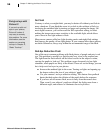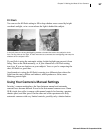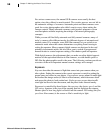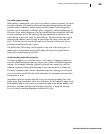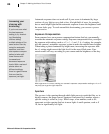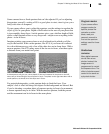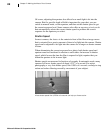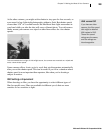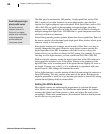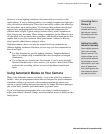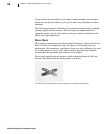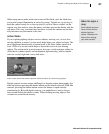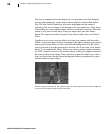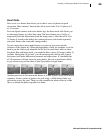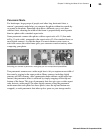
Microsoft Picture It! Companion Guide
Chapter 2: Making the Most of Your Camera
24
The film speed is measured by ISO number. A high-speed film, such as ISO
800, is ideal for low-light situations or action photography, since the film
requires less light to properly expose the photo. Slow-speed films, such as ISO
100 or ISO 200, are good for photographing in bright daylight, since they
require a lot of light. If you plan on using the same roll of film for shooting in
multiple settings and light levels, ISO 400 film is a good compromise and does
relatively well in most situations.
Faster films generally produce grainier photos than lower-speed films. Some of
the newer varieties of professional grade high-speed films produce a finer grain
structure, which is less noticeable.
Since digital cameras use an image sensor instead of film, there is no way to
actually change the film speed. However, many digital cameras provide the
digital equivalent of an ISO. Sometimes called the sensitivity setting, this
feature allows you, in effect, to change the ISO setting. For example, if you are
shooting in a low-light situation, you can switch from ISO 100 to ISO 400.
With most digital cameras, setting the digital equivalent of the ISO setting to a
faster speed can introduce noise to the photo. Similar to the graininess from
high-ISO film, noise is random pixels in the photo that are slightly off-color or
too bright. Cameras vary widely, so it is worthwhile to experiment with your
digital camera’s ISO settings and examine the results.
In low-light situations, consider turning off the flash and setting the camera to a
faster ISO setting. This may produce some noise in the photo. But that result
might be preferable to what you’d get by taking the photo at slower ISO setting
with the harsh lighting of the on-camera flash.
Setting the White Balance
Most digital cameras are automatically programmed to calculate the proper
white balance for each exposure. To calculate the white balance, the camera
assumes the lightest spot in the picture is white, and adjusts the other colors
accordingly. Under most circumstances, this automatic function should prevent
an off-color cast in your photos.
Avoid sharpening a
photo with noise
Do not to use the
sharpen feature in
Picture It! on digital
photos with noticeable
noise; sharpening
accentuates the
inaccurate pixels.



